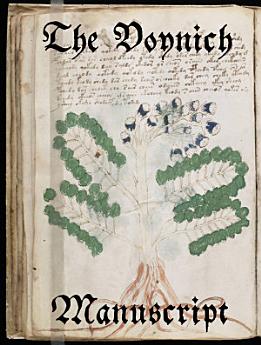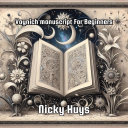The Voynich Manuscript
Wilfrid Voynich · Anonyme
2012年6月 · e-artnow
4.1star
81則評論report
電子書
204
頁
report評分和評論未經驗證 瞭解詳情
關於本電子書
This ebook is the complete reproduction of the preserved Voynich Manuscript, formatted for high resolution color ebook reader displays. The Voynich manuscript, also known as "the world's most mysterious manuscript", is a work which dates to the early 15th century, possibly from northern Italy. It is named after the book dealer Wilfrid Voynich, who purchased it in 1912. Much of the manuscript resembles herbal manuscripts of the time period, seeming to present illustrations and information about plants and their possible uses for medical purposes. However, most of the plants do not match known species, and the manuscript's script and language remain unknown and unreadable. Possibly some form of encrypted ciphertext, the Voynich manuscript has been studied by many professional and amateur cryptographers, including American and British codebreakers from both World War I and World War II. As yet, it has defied all decipherment attempts, becoming a cause célèbre of historical cryptology. The mystery surrounding it has excited the popular imagination, making the manuscript a subject of both fanciful theories and novels. None of the many speculative solutions proposed over the last hundred years has yet been independently verified. Illustrations: The illustrations of the manuscript shed little light on the precise nature of its text but imply that the book consists of six "sections", with different styles and subject matter. Except for the last section, which contains only text, almost every page contains at least one illustration. Following are the sections and their conventional names: Herbal: Each page displays one plant (sometimes two) and a few paragraphs of text—a format typical of European herbals of the time. Some parts of these drawings are larger and cleaner copies of sketches seen in the "pharmaceutical" section. None of the plants depicted is unambiguously identifiable. Astronomical: Contains circular diagrams, some of them with suns, moons, and stars, suggestive of astronomy or astrology. One series of 12 diagrams depicts conventional symbols for the zodiacal constellations (two fish for Pisces, a bull for Taurus, a hunter with crossbow for Sagittarius, etc.). Each of these has 30 female figures arranged in two or more concentric bands. Most of the females are at least partly naked, and each holds what appears to be a labeled star or is shown with the star attached by what could be a tether or cord of some kind to either arm. The last two pages of this section (Aquarius and Capricornus, roughly January and February) were lost, while Aries and Taurus are split into four paired diagrams with 15 women and 15 stars each. Some of these diagrams are on fold-out pages. Biological: A dense continuous text interspersed with figures, mostly showing small naked women, some wearing crowns, bathing in pools or tubs connected by an elaborate network of pipes, some of them strongly reminiscent of body organs. Cosmological: More circular diagrams, but of an obscure nature. This section also has foldouts; one of them spans six pages and contains a map or diagram, with nine "islands" or "rosettes" connected by "causeways" and containing castles, as well as what may possibly be a volcano. Pharmaceutical: Many labeled drawings of isolated plant parts (roots, leaves, etc.); objects resembling apothecary jars, ranging in style from the mundane to the fantastical; and a few text paragraphs. Recipes: Many short paragraphs, each marked with a flower- or star-like "bullet".
評分和評論
4.1
81則評論
為這本電子書評分
歡迎提供意見。
閱讀資訊
智慧型手機與平板電腦
筆記型電腦和電腦
你可以使用電腦的網路瀏覽器聆聽你在 Google Play 購買的有聲書。
電子書閱讀器與其他裝置
如要在 Kobo 電子閱讀器這類電子書裝置上閱覽書籍,必須將檔案下載並傳輸到該裝置上。請按照說明中心的詳細操作說明,將檔案傳輸到支援的電子閱讀器上。







